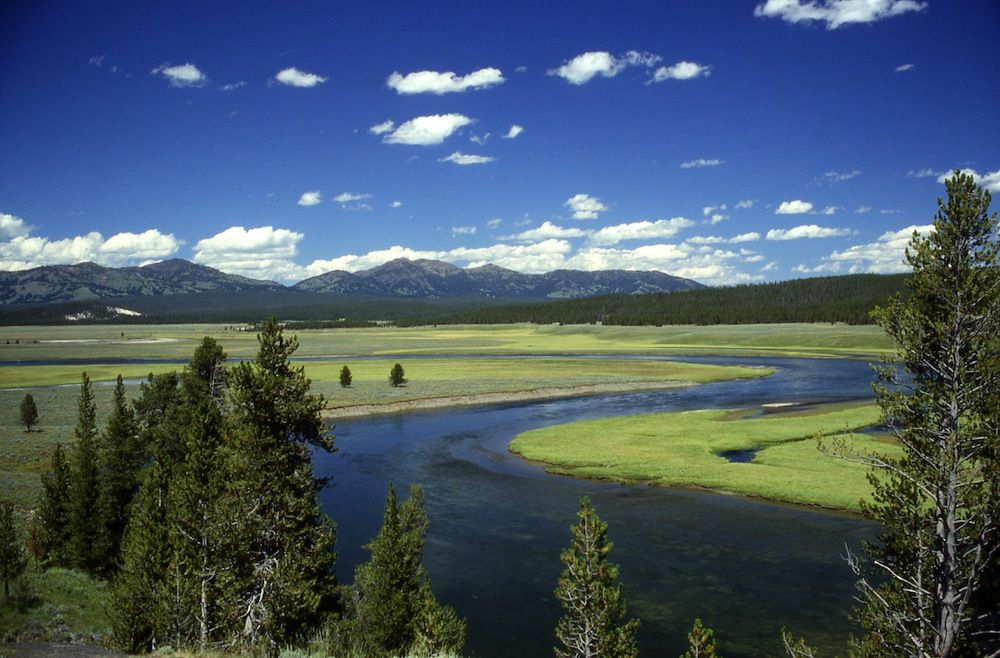Earthquakes Could Trigger Massive Supervolcano Eruptions, Study Suggests

Supervolcanoes, such as the one dormant under Yellowstone National Park, may erupt when cracks form in the roofs of the chambers holding their molten rock, according to a new study.
If scientists want to monitor supervolcanoes to see which ones are likely to erupt, this finding suggests they should look for telltale signs, such as earthquakes and other factors that might crack the magma chambers of these giant volcanoes.
Supervolcanoes are capable of eruptions overshadowing anything in recorded human history — ones in the past could spew more than 500 times more magma and ash than Mount St. Helens did in 1980, the researchers said. These massive eruptions would also leave behind giant craters known as calderas that measure up to 60 miles (100 kilometers) wide. Twenty or so supervolcanoes exist today, including one beneath Yellowstone in the United States. [Big Blasts: History's 10 Most Destructive Volcanoes]
Much remains unknown about what triggers supervolcano eruptions because no supervolcano has been active since the earliest human records began. Conventional volcanoes are known to erupt as molten rock flows into and pressurizes their magma chambers. However, previous research suggested this kind of trigger does not work for supervolcanoes, whose magma chambers can be dozens of miles wide and several miles thick — magma cannot fill these chambers fast enough to generate enough pressure for an eruption.
"Supereruptions are very rare because they are very difficult to trigger," study lead author Patricia Gregg, a volcanologist at the University of Illinois at Urbana-Champaign, told Live Science. "Part of what makes supereruptions so intriguing is that they are so infrequent. This indicates that there must be something different about supervolcano evolution and eruption versus smaller volcanoes that erupt more frequently."
Scientists recently suggested that supervolcanic eruptions occur because magma might be less dense than the rock surrounding it. This could force magma to buoy up through the ground, the way a balloon floats upward in water, potentially pressurizing magma chambers enough for eruptions.
However, at supervolcano sites, "we don't see a lot of evidence for pressurization," Gregg said in a statement. When she and her colleagues incorporated magma buoyancy into their numerical models of supervolcanoes, they found it could not trigger eruptions.
Sign up for the Live Science daily newsletter now
Get the world’s most fascinating discoveries delivered straight to your inbox.
"We have ruled out a potential triggering mechanism for supereruptions," Gregg said. "This is particularly important when investigating unrest at a supervolcano. If all it takes is buoyancy to trigger a catastrophic caldera-forming eruption, we should be very concerned when we see images of the large magmatic systems at Yellowstone and Toba, Indonesia, for example. However, through rigorous testing, we have found no link between buoyancy and the potential to erupt one of these systems. Buoyancy just does not produce a force strong enough to do it."
Instead, Gregg and her colleagues found the size of a supervolcano's magma chamber is a much greater factor than magma buoyancy when it comes to eruptions.
"As a magma chamber expands, it pushes the roof up and forms faults," Gregg said in a statement. "As these very large magma chambers grow, the roof above may become unstable, and it becomes easier to trigger an eruption through faulting or failure within the rock."
The research team's model suggests that, if a crack in the roof penetrates the magma chamber, the magma within uses the fault or crack as a vent to shoot to the surface. This could trigger a chain reaction that "unzips" the whole supervolcano, the researchers said.
These findings suggest that if supervolcano eruptions are triggered by external factors, such as faults in the roofs of their magma chambers, "then we should look at seismicity, what types of faults are being developed, what is the stability of the roof and what kinds of activities are happening on the surface that could cause faulting," Gregg said in a statement.
In the future, Gregg and her colleagues want to use supercomputers to track the evolution of supervolcano magma chambers over time in greater detail. "I am very excited to see how the research develops over the next five to 10 years," Gregg said.
The scientists detailed their findings Nov. 2 at the annual meeting of the Geological Society of America in Baltimore.
Follow Live Science @livescience, Facebook & Google+. Original article on Live Science.












